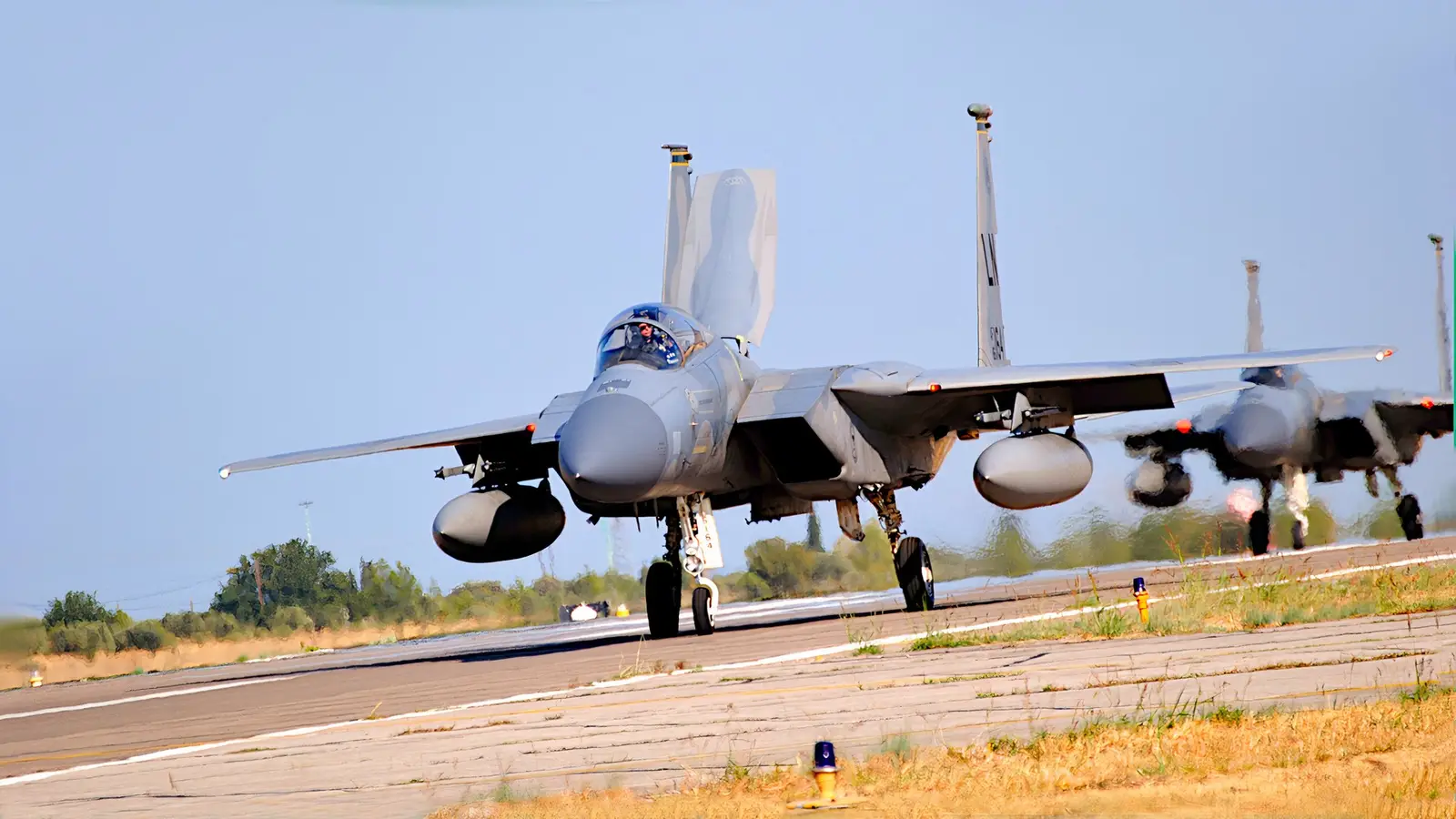
The F-15 Eagle family is one of the most iconic and long‐serving fighter jet programs in modern aviation history. Over the decades, various air forces around the world have adopted different variants of the F-15 to meet roles ranging from air superiority to strike missions. In this guide, we’ll explore which countries have the largest fleets of F-15s, how many planes they possess, which variants, and how those forces stack up in terms of capability, modernization, and future outlook.
Originating in the early 1970s, the F-15 was built to give air forces a clear edge in air superiority. As threats and technologies have evolved, so have F-15 variants, such as the Strike Eagle versions, export / foreign‐built or built under licence, and most recently the F-15EX. Understanding which air forces have large numbers of F-15s provides insight into global air power balances, the extent of investment in upgrading older aircraft, and what to expect in future air force structures. This guide will cover not only raw numbers but also variant differences, modernization efforts, and operational considerations.
The United States Air Force: The Largest F-15 Operator
According to FlightGlobal , 919 F-15s are still flying around the world. These numbers combine different variants: from the F-15C and D legacy models to Strike Eagles (F-15E family), and newer or upgraded versions like F-15EX / export variants (F-15QA, F-15SA, etc.).
The United States Air Force (USAF) remains the natural dominant user by fleet size, with 395 in service and another 102 on order.
McDonnell Douglas initially developed the F-15 Eagle in the late 1960s, in response to the USAF request for a jet to specifically meet its need for aerial combat fighters. After nearly three decades of production, the F-15 Eagle has been one of the most successful tactical fighters with several primary users.
The fighter jet is powered by two Pratt & Whitney F100 turbofan engines with afterburners, each providing more than 23,400 pounds of thrust. While its payload depends on the mission, the Eagle can travel at a speed of 1,875 miles per hour (the Mach 2 class) and reach a ceiling of 65,000 feet (19,812 meters).
By early 2025, the active-duty USAF bid farewell to the last operational F-15C/D squadrons, although that doesn’t mean the Eagle won’t keep flying:
F-15C/Ds are aging and gradually retiring, but they are still in service with Air National Guard units
F-15E Strike Eagles remain the backbone of long-range precision strike
F-15EX Eagle IIs will reinforce homeland defense and Pacific posture while replacing some of the oldest airframes in the inventory
Saudi Arabia And Japan: Legacy Giants With Evolving Eagle Fleets
In 1982, the ‘Peace Sun’ Foreign Military Sales program marked the start of the deliveries of the first Saudi F-15C and F-15D to the Royal Saudi Air Force. Today, the F-15 fleet of Saudi Arabia is second by numbers in the world, with roughly 210 F-15s in service.
The F-15SA (Saudi Advanced) is an advanced variant of the older F-15S export Strike Eagle models, featuring a digital electronic warfare suite, fly-by-wire flight controls, an infrared search and track system, AESA APG-63 radar , advanced joint helmet-mounted cueing system, enhanced avionics, and more.
Japan Air Self-Defence Force (JASDF), keeps about 200 F-15s in service, built domestically under license by Mitsubishiwith the designation F-15J/DJ to complement the air defense capability following the retirement of the F-104 fighter plane.With high scramble rates over the East China Sea and a focus on defending the home islands, the JASDF values availability, radar coverage, and rapid interception, keeping jet fighters at the core of Japan’s air defense network.
Boeingand Mitsubishi Heavy Industries are carrying on a modernization for standoff and high-end air defense, to upgrade selected F-15J airframes with modern sensors, EW, and integration of standoff weapons, creating a tiered fleet where the best-equipped jets handle the toughest missions.
Israel, South Korea, Singapore, And Qatar: High-end Eagles With Sharp Missions
The Israeli Air Force (IAF) was the first export customer for the McDonnell Douglas F-15 Eagle in 1975 under the Peace Fox program, with the aircraft, nicknamed “Baz” (Falcon), entering service in 1976. Initially an air-superiority fighter jet, the IAF adapted the F-15 A/B/C/D variants into a multirole platform, including for ground strikes.
The jets first saw combat in 1978 in Lebanon and have since achieved numerous air-to-air kills. The advanced F-15I Ra’am (Thunder), acquired from 1994 and delivered 1998–1999, operates with the 69th Squadron as a strategic bomber.
In terms of sensors and avionics, the Baz variants feature the AN/APG-63 radar, with some of them upgraded to the AN/APG-70 for enhanced terrain mapping and multitarget tracking, while the Ra’am integrates the APG-70 with active electronically scanned array (AESA) upgrades like the AN/APG-63(V)1/2 for superior situational awareness; additionally, it incorporates the LANTIRN targeting pod with forward-looking infrared (FLIR) sensors and terrain-following radar for all-weather, day/night operations, alongside Israeli-developed mission computers, communication systems, and advanced electronic warfare (EW) suites with domestic jamming and countermeasure capabilities that surpass even the US F-15EX’s Eagle Passive/Active Warning Survivability System (EPAWSS) system in regional adaptability.
South Korea ’s F-15K Slam Eagle, acquired under the 2002 F-X program, saw 59 twin-seat aircraft delivered from 2005 to 2012. These are advanced multirole fighters equipped with AN/APG-63(V)1 AESA radars, conformal fuel tanks for extended range, and a suite of air-to-air and air-to-ground munitions, including AGM-84 Harpoon anti-ship missiles and JDAM precision-guided bombs.
The Republic of Singapore Air Force (RSAF) has long prioritized the F-15SG variant to defend its strategic island nation and project power in Southeast Asia. With at least 40 aircraft estimated in service, the F-15SG represents a sophisticated evolution tailored for multirole operations in a complex maritime domain, equipped with AN/APG-63(V)3 radar, GE F110 engines, and advanced avionics, with potential EPAWSS upgrades.
Qatar operates 36 F-15QA Advanced Eagle, also known as Ababil. This variant is powered by Pratt & Whitney F100-PW-229, and it features fly-by-wire controls, an advanced cockpit with large-area displays, the EPAWSS for superior threat detection, and new outer wing hardpoints to increase the payload.
Modernization Trends And The Role Of The F-15EX
With many air forces facing aging F-15 airframes, one key question is: how long can older variants remain viable, and when is it worth ordering or upgrading to newer models? The F-15EX (and export equivalents like F-15QA, SA, etc.) figure into that strategy. The F-15EX Eagle II offers modern capabilities: digital fly-by-wire flight control, improved radar systems and sensor fusion, modern electronic warfare suites, capacity for carrying large loadouts and more weapons, and updated cockpit/display systems.
As we saw in the earlier paragraph, Qatar, Singapore and Saudi Arabia already operate near-EX standards. These newer or upgraded models close many of the gaps between 4th-generation aircraft and emerging threats. However, new orders are expensive, and integrating them involves updating infrastructure, training pilots and maintainers, establishing supply chains, and ensuring compatibility with weapons, sensors, and command and control networks. Also, with stealth technology becoming more prominent, some air forces need to decide whether to emphasize stealth or offset stealth with other capabilities (e.g. long range, payload, electronic warfare).
Aircraft fatigue, structural life, and technological obsolescence are real issues. Upgrading avionics or radar only helps if the rest of the aircraft (engines, structure, systems) can keep up. Additionally, warfare is moving more toward networked systems, unmanned systems, sensors, and cyber/EW threats. Thus, modernization must cover more than just raw speed or payload; survivability in contested environments is increasingly critical.
Why The F-15 Endures: Cost-effective Mass, Payload, And Mission Flexibility
The F-15 persists because it solves hard operational problems without exotic logistics. It offers twin-engine reach, heavy payload, and generous growth margins for power, cooling, and avionics, attributes that make it ideal for hauling standoff munitions, maritime-strike kits, and dense air-to-air loads. In mixed fleets, Eagles complement stealth fighters by carrying large magazines of advanced missiles and acting as “shooters” networked to stealthy “spotters.”
Expect the biggest operators to shape the Eagle’s evolution. As F-15EX numbers grow and export fleets continue to modernize, the Eagle will remain central to layered air defense and strike packages. We’ll likely see an emphasis on standoff weapons carriage, integration with space and long-range sensing, and tactics that pair F-15 “shooters” with fifth-gen “spotters” and unmanned teammates for distributed operations.
The headline isn’t just that the F-15 is still here; it’s that it’s still growing into new roles. Between the US modernizing with EX, Japan elevating select F-15J airframes, and Gulf/Asia operators sustaining advanced strike variants, the Eagle’s next chapter is about relevance at scale. The largest fleets will keep writing that story, balancing quantity with quality, and anchoring airpower where range, payload, and persistence are non-negotiable.
The Eagle’s Next Decade: Where Tradition Meets Transition
Even as stealth platforms dominate procurement headlines, the F-15 continues to evolve in ways that keep it uniquely relevant. For air forces balancing budgets, logistics, and deterrence needs, the Eagle remains an attractive bridge between fourth- and fifth-generation eras.
Practical takeaways are clear: operators with modernized F-15s gain strike reach, payload capacity, and persistent presence at a cost lower than all-stealth fleets. For allies without deep industrial bases, licensing and domestic upgrades (as seen in Japan and Israel) offer a pathway to extend service life and retain sovereign control over capabilities.
Looking forward, the F-15’s role will expand in networked operations, acting as the heavy missile carrier alongside stealth “spotters” and unmanned wingmen. Rather than being replaced, the Eagle will serve as a force multiplier, ensuring that in the 2030s and beyond, global fleets can project both mass and precision when airpower matters most.



